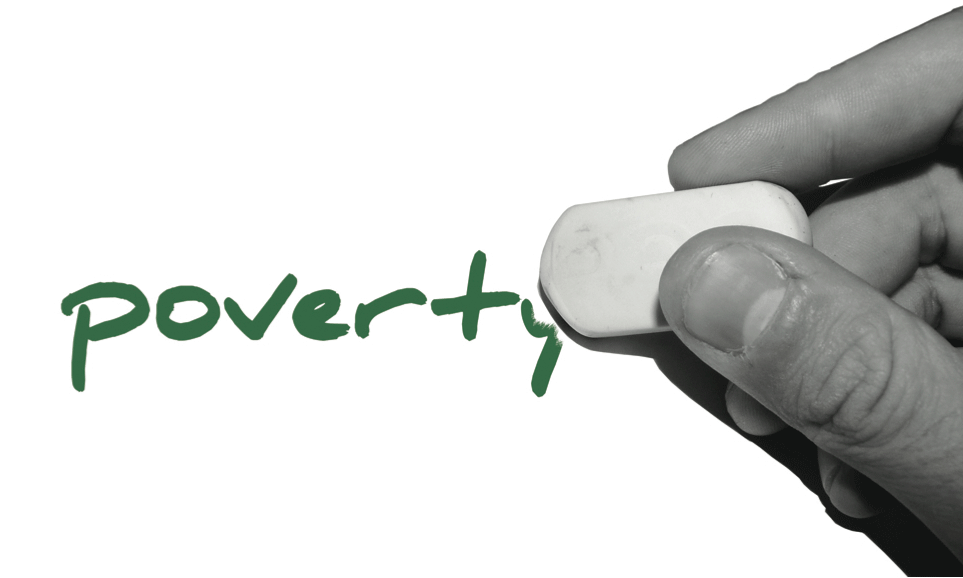The practice of giving small loans (as little as US$10 or as much as $US500) to the very poor, alongside other financial services such as savings accounts and financial training is what the Grameen Bank of economist Mohammad Yunus does. His microcredit-focused Grameen bank was the reason he won a Nobel peace prize in 2006. Over the past decades, microfinance has proven to be a powerful tool in raising welfare levels of the poor through increased disposable household income. Additional effects of microfinance on social welfare are for example female empowerment, health, nutrition and education.
Microfinance was mainly created because banks were not meeting the needs of the large segments of the population. One of the barriers to reaching those segments was the fact that formal credit records for those clients were non-existent. Most people in this segment have never been able to get a loan or a credit card and paid most things by cash in rural areas.
Companies will hesitate to extend loans if they cannot get reliable information to assess the risks of potential clients. For companies that operate in different locations across the world, obtaining client information and making objective evaluations can be a difficult task. It can also be costly. That’s why there’s a need to exploit technology and scientific methods to make things easier and less expensive.
Traditionally, financial service companies employ “small data”, such as credit scores, as they evaluate potential customers. However, as new technologies and innovative financial services emerged, new information that is useful in assessing credit worthiness has become available, but is highly disorganized. This is where big data becomes increasingly useful. Big data compiles and organizes fragmented and scattered data into something useful for financial service providers.
Data analytics can increase financial inclusion because of its benefit to financial service companies – especially those that intend to provide services on a global scale. The collection and analysis of vast amounts of information from and about potential customers is useful in evaluating financial risk. Companies extending microfinance services can better assess the risks involved in lending money to certain individuals with the help of big data as it can be used to come up with credit worthiness ratings or other quantifiable ways for credit risk assessment.
To address this infrastructure challenge, these microfinance companies usually rely on mobile phones as their way to connect to their current and prospective clients. Mobile phones become the main method of communication between microfinance service providers and their clients in remote areas. The better they can assess the financial risk of the potential customers, the more people can be helped.
Hope, D. (2018, January 30). How big Data is enabling financial inclusion. Retrieved from smartdatacollective: https://www.smartdatacollective.com/big-data-enabling-financial-inclusion/
Maas, T., & Bel, J. d. (2018, July 30). overcoming the challenges of microfinance to reach more people. Retrieved from holland FinTech: https://hollandfintech.com/2018/07/overcoming-the-challenges-of-microfinance-to-reach-more-people/
Vivanco, F. (2015, September 15). Microfinance places hope in big data, but other things are also needed. Retrieved from Fomin, multtilateral investment fund: https://www.fomin.org/en-us/Home/News/article-details/ArtMID/18973/ArticleID/3158/Microfinance-places-hope-in-big-data-but-other-things-are-also-needed.aspx
Zhang, Q. (2017, June 26). Yes, microlending reduces extreme poverty. Retrieved from The conversation: http://theconversation.com/yes-microlending-reduces-extreme-poverty-78088


First of all, this is a very interesting subject.
My stance on it, is that with all the inventions of today, it should be much more easy to help third world countries. Microfinance could help a lot with that, since bigger financial services, such as well-estabilished banks, rather choose for big projects which are more certain.
What I wonder after reading this blog, is what kind of information microfinance services could gain from their contact with the loanees, if the only way is via phone. In lesser fortunate countries, the phones that the people use are normally not smartphones, but phones that would be considered brand new by first world countries back in the ’00. Information is not very easily provided, i.e. to give your name on a smartphone, would be a few touches, with the older phones, people have to SMS them.
I really do hope that microloans in financially small countries will give outcome to a lot of people, but I am still not convinced that the infrastructure of the microloans is sufficient enough.